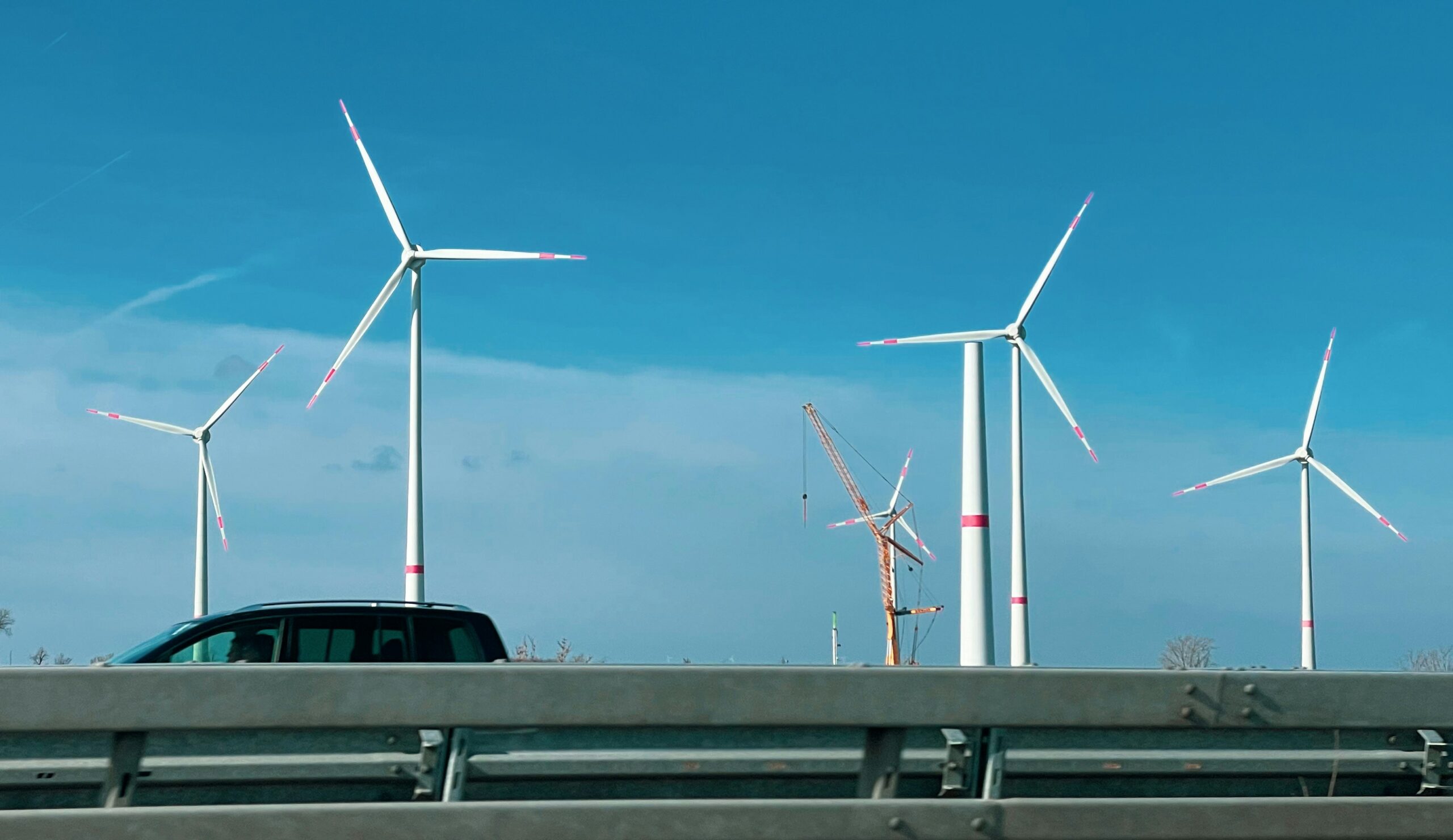The Role of Green Technology in Protecting Our Environment
 Photo by Bernd 📷 Dittrich on Unsplash
Photo by Bernd 📷 Dittrich on Unsplash Introduction to Green Technology
Green technology, often referred to as environmental technology, is a broad term that encompasses the development and application of products, equipment, and systems used to conserve the environment and natural resources. With the increasing awareness of environmental degradation and the urgent need for sustainable practices, green technology has become pivotal in addressing these growing concerns. At its core, green technology aims to minimize environmental impact through innovation and efficiency, ensuring that economic growth and environmental protection go hand in hand.
The primary goals of green technology are multifaceted. Firstly, it seeks to reduce pollutants and emissions that contribute to air, water, and soil contamination. This is achieved through advanced technologies in waste management, water purification, and air quality control. By mitigating these pollutants, green technology helps in protecting biodiversity and ensuring healthier ecosystems.
Secondly, green technology focuses on the conservation of natural resources. This entails the adoption of sustainable practices that limit the over-extraction of raw materials and promote the recycling and reuse of existing resources. Innovations in this area include energy-efficient appliances, eco-friendly building materials, and sustainable agriculture practices. These solutions not only preserve natural resources but also enhance the efficiency and longevity of the materials in use.
Moreover, the promotion of renewable energy sources is a cornerstone of green technology. By transitioning from traditional fossil fuels to renewable energy, such as solar, wind, and hydroelectric power, green technology seeks to harness energy in a way that is both sustainable and non-polluting. This transition is crucial in combating climate change and reducing the ecological footprint of energy consumption.
As the global population continues to grow and industrial activities expand, the pressing need for green technology becomes more apparent. It offers innovative solutions that not only address current environmental challenges but also pave the way for a more sustainable and resilient future. By integrating green technology into various sectors, including transportation, manufacturing, and energy, we can make significant strides in safeguarding our environment for generations to come.
The Historical Evolution of Green Technology
Over the past few decades, green technology has emerged as an integral facet in the quest to protect our environment. Its journey can be traced back to the early industrial period when the pursuit of sustainable energy sources became paramount. In the mid-20th century, the detrimental impact of industrial activities on the environment began to surface, prompting policymakers and scientists to seek alternatives that would minimize ecological harm. This era saw the initial development of renewable energy sources like solar and wind power, setting the foundation for modern green technology.
A pivotal milestone in the historical evolution of green technology was the energy crisis of the 1970s. The crisis underscored the finite nature of fossil fuels and accelerated the research and development of alternative energy sources. It was during this period that significant inventions, such as improved solar panels and wind turbines, were developed, offering viable solutions to traditional energy problems. Concurrently, environmental regulations and policies, including the establishment of agencies like the Environmental Protection Agency (EPA) in the United States, began to take shape, laying the groundwork for future advancements.
The late 20th and early 21st centuries witnessed substantial progress in green technology, driven by global environmental awareness and scientific innovations. The Kyoto Protocol of 1997 was a landmark international treaty aimed at reducing greenhouse gas emissions, highlighting the urgent need for industrialized nations to adopt greener practices. This period also saw the commercialization of electric and hybrid vehicles, bioenergy, and advancements in energy-efficient building materials, all of which have significantly contributed to reducing carbon footprints.
Major global environmental events, such as the unprecedented wildfires and melting polar ice caps, have further spurred investment and innovation in green technology. Today, the development of green technology continues at an unprecedented pace, encompassing a broad spectrum of solutions ranging from advanced battery storage systems to smart grid technology. These innovations not only aim to protect the environment but also promise economic benefits by creating new industries and jobs.
Types of Green Technologies
Green technology plays a pivotal role in protecting the environment through various innovative approaches. One prominent category is renewable energy technologies, which encompass solar, wind, and hydroelectric power systems. Solar energy harnesses the sun’s rays to generate electricity, offering a clean and inexhaustible energy source. Photovoltaic cells in solar panels convert sunlight into electrical energy, reducing reliance on fossil fuels and decreasing greenhouse gas emissions.
Wind energy is another significant green technology. Wind turbines capture kinetic energy from wind currents and convert it into electrical power, providing a sustainable and eco-friendly energy alternative. By integrating wind farms into the power grid, we can reduce carbon footprints and support transition to a low-carbon economy.
Hydroelectric power, which utilizes the energy from flowing water to produce electricity, exemplifies the efficiency of green technology. Dams, equipped with turbines and generators, transform kinetic energy from water flow into electrical energy, contributing significantly to the global renewable energy portfolio.
Energy-efficient systems are critical components of green technology. LED lighting, for instance, consumes significantly less power than traditional incandescent bulbs while providing equal, if not superior, illumination. Smart grids enhance the efficiency of power distribution by incorporating advanced metering infrastructure and automated control systems, thereby optimizing energy use and minimizing waste.
Sustainable agriculture technologies also play an essential role. Techniques such as precision farming use data analytics and IoT devices to optimize resource use, resulting in enhanced crop yields while minimizing environmental impact. Greenhouses equipped with advanced climate control and hydroponic systems further support sustainable agricultural practices.
Water purification systems, crucial in ensuring water security, employ advanced technologies like reverse osmosis, UV filtration, and nanotechnology. These systems effectively eliminate contaminants from water, providing safe drinking water and supporting environmental conservation.
Furthermore, biodegradable materials are gaining traction as sustainable alternatives to conventional plastics. Made from natural materials such as cornstarch, these biodegradable products decompose naturally, reducing waste and minimizing environmental pollution.
Through these diverse and innovative green technologies, society is making significant strides towards sustainable development and environmental protection.
Benefits of Green Technology
Green technology, also known as clean technology, plays a crucial role in protecting our environment through various means. One of the primary benefits is the significant reduction in greenhouse gas emissions. By utilizing renewable energy sources such as solar, wind, and hydroelectric power, green technology helps in minimizing the reliance on fossil fuels, thus reducing carbon dioxide and other harmful emissions. This reduction in greenhouse gases is vital for mitigating climate change and its associated impacts on ecosystems and human societies.
In addition to curbing emissions, green technology is instrumental in conserving natural resources. Technologies such as advanced recycling systems and water-efficient practices enable us to use resources more judiciously, ensuring their availability for future generations. By promoting the use of sustainable materials and reducing waste, green technology also plays a pivotal role in addressing the growing concerns over resource depletion.
The economic benefits of green technology are noteworthy as well. The green sector has become a significant source of job creation, offering employment opportunities in fields such as renewable energy, environmental consultancy, and sustainable agriculture. Furthermore, the implementation of energy-efficient technologies can lead to substantial cost savings for businesses and households alike. By reducing energy consumption and improving efficiency, green technologies can lower utility bills and operational costs, ensuring long-term economic sustainability.
Beyond environmental and economic advantages, green technology also brings about positive societal impacts. Improved air and water quality resulting from reduced pollution contribute to better public health outcomes, lowering the incidence of respiratory diseases and other health issues related to environmental degradation. Additionally, the shift towards greener practices enhances the overall quality of life by creating cleaner, safer, and more sustainable living environments.
Overall, the benefits of green technology are multifaceted, underscoring its importance in the quest for a sustainable and healthy future. By addressing environmental, economic, and societal challenges, green technology paves the way for a more resilient and prosperous world.
Challenges in Adopting Green Technology
The widespread adoption of green technology faces several significant challenges, despite its numerous environmental benefits. One of the foremost barriers is the high initial cost associated with the development and implementation of green technologies. For instance, renewable energy sources such as solar and wind require substantial upfront investments in infrastructure and technology. These high initial costs can be prohibitive for individuals and companies, hindering the transition to greener alternatives.
Additionally, technological limitations present another obstacle. While green technology is continually advancing, many solutions are still in their nascent stages and may not yet offer the efficiency or reliability of traditional methods. This can deter stakeholders from investing in emerging green technologies, preferring to stick with established, albeit less eco-friendly, options.
Lack of public awareness also plays a crucial role. Despite increasing information on the importance of sustainable practices, many people remain unaware of the benefits and availability of green technologies. This gap in awareness can prevent individuals and organizations from making environmentally friendly choices. Educational initiatives and widespread informational campaigns may be essential to bridging this knowledge gap and encouraging broader adoption of green solutions.
Resistance from established industries adds another layer of complexity. Traditional industries, particularly those heavily reliant on fossil fuels, may oppose the shift towards green technologies due to potential economic losses and job displacement. This resistance can manifest in various ways, from lobbying against environmental regulations to spreading misinformation about the efficacy of green technologies, further complicating the adoption process.
Policy and regulatory challenges also impede the implementation of green technology. In some regions, outdated or insufficient regulatory frameworks fail to support the development and adoption of sustainable technologies. In others, lack of incentive structures and subsidies makes green technology a less attractive option for businesses and consumers. Policymakers need to address these structural barriers through the creation of supportive policies, incentives, and robust regulatory frameworks to promote the growth of green technology and facilitate a smoother transition to sustainable practices.
Case Studies of Successful Green Technology Implementations
Real-world applications of green technology exemplify its tangible benefits across various sectors, shedding light on its practical feasibility. A forefront example is Denmark’s transition to wind energy. Denmark has strategically invested in wind power since the 1970s, leading to an impressive milestone where wind energy supplies approximately 50% of the nation’s electricity consumption. This not only underscores the reliability of renewable energy but also highlights the potential for wind technology to decarbonize the power sector successfully.
In the realm of waste management, San Francisco’s ambitious zero-waste initiative serves as an impactful case study. Launched in 2002, the program aims to divert all waste from landfills by 2020. Through rigorous recycling, composting efforts, and public education, San Francisco successfully diverted over 80% of its waste from landfills. This initiative demonstrates the effectiveness of comprehensive waste management strategies, emphasizing the vital role of community participation and stringent policies in achieving environmental sustainability goals.
Transportation, another critical area, witnesses a transformative shift through Norway’s adoption of electric vehicles (EVs). Spearheaded by strong governmental incentives, tax exemptions, and extensive charging infrastructure, Norway boasts the highest per capita rate of EV ownership globally. By 2020, electric vehicles constituted over 50% of new car sales. Norway’s success story underscores the efficacy of policy-driven approaches complemented by technological advancements in facilitating the transition towards a sustainable transportation system.
These case studies illustrate that implementing green technology is not merely theoretical but a practical avenue that can lead to significant environmental improvements. Denmark, San Francisco, and Norway exemplify how strategic investments, robust policies, and public engagement can drive successful green technology adoption. As these examples reveal, the path toward a sustainable future is achievable and can be replicated across different regions and sectors.
As we look towards the future, green technology is poised to play an increasingly pivotal role in safeguarding our environment. Emerging trends and innovative solutions are continually being developed, reflecting the dynamic nature of this field. One of the most promising areas is energy storage, where ongoing research aims to enhance the efficiency and capacity of batteries and other storage systems. Breakthroughs in this domain could lead to more reliable and widespread use of renewable energy sources, thereby reducing our reliance on fossil fuels and decreasing carbon emissions.
Another critical area of development is carbon capture technology. Scientists and engineers are fervently working on advanced methods to capture and store carbon dioxide emissions from industrial processes. These innovations include direct air capture systems and bioenergy with carbon capture and storage (BECCS), which have the potential to significantly mitigate the impacts of climate change. With continued research and refinement, these technologies could become a staple in our efforts to reduce atmospheric CO2 levels.
Sustainable materials are also seeing substantial advancements. Researchers are exploring the use of biodegradable materials, recycled resources, and innovative composites that offer the same or improved functionality as traditional materials but with a reduced environmental footprint. For instance, developments in eco-friendly construction materials, such as sustainable concrete and recycled plastics, are contributing to greener building practices and the conservation of natural resources.
Furthermore, the integration of artificial intelligence (AI) and the Internet of Things (IoT) into green technologies holds great promise. AI can optimize energy consumption, predict maintenance needs for renewable energy infrastructure, and improve efficiency across various sectors. IoT devices, equipped with sensors and connected systems, can monitor environmental conditions in real-time, enabling more responsive and adaptive strategies to manage resources.
As these technologies continue to evolve, their collective impact on environmental protection will be profound. The synergy between advanced materials, cutting-edge energy solutions, and intelligent systems heralds a promising future for green technology, one that holds the potential to transform our approach to sustainability and significantly reduce our ecological footprint.
Conclusion: The Path Forward for Green Technology
As we conclude our exploration of the role of green technology in protecting our environment, it becomes evident that this innovative approach offers numerous solutions to address pressing environmental challenges. From renewable energy sources to efficient waste management systems, green technology embodies the advancements and efforts required to mitigate climate change effects and reduce our ecological footprint. The continued development and implementation of these technologies are crucial for realizing a sustainable future.
A significant aspect of maximizing the potential of green technology lies in sustained investment and research. Governments, businesses, and research institutions must remain committed to funding innovations that drive environmental progress. Emerging technologies such as advanced solar panels, wind turbines, and electric vehicles require continuous enhancement to ensure they meet the growing demands and efficiency standards.
Equally important is the role of public support and awareness. Individuals, communities, and organizations must embrace green technologies and integrate them into their daily lives. Public campaigns that highlight the benefits of these innovations can encourage widespread adoption, driving a collective effort to promote environmentally-friendly practices. Education and outreach programs can bridge the knowledge gap, empowering people to make informed decisions that favor sustainability.
Moreover, the path forward for green technology necessitates collaborative efforts. Governments must set favorable policies and provide incentives to accelerate the adoption of green technologies. Private enterprises should take the lead in integrating sustainable practices into their operations and supply chains, demonstrating that economic growth and environmental stewardship can coexist. Individuals, in turn, can contribute through conscious choices like reducing energy consumption, recycling, and supporting eco-friendly products.
In essence, by leveraging the power of green technology, we possess the tools to foster a healthier and more sustainable planet. The convergence of investment, innovation, public support, and collaborative efforts will propel us toward a future where environmental preservation and technological advancement walk hand in hand. Let us commit to this path for the benefit of current and future generations.





Tidak ada komentar